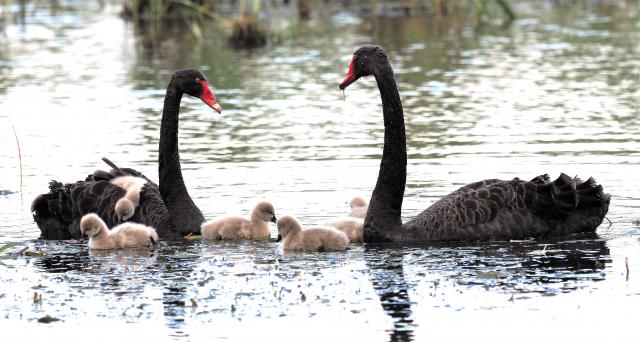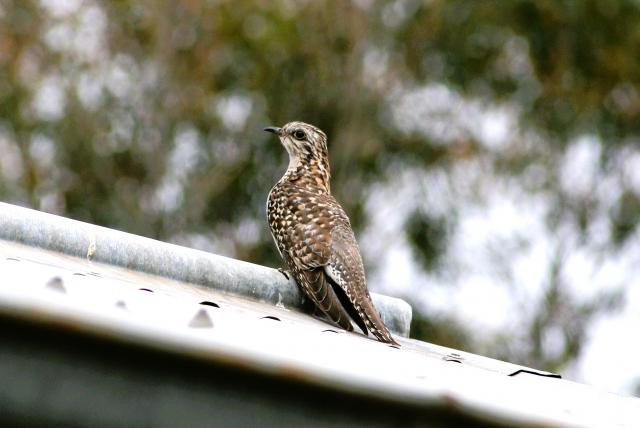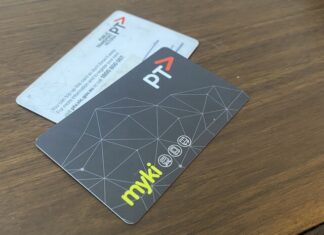It was wonderful to see two hooded plover hatchlings fledged at 40W at the western end of 13th Beach.
There are vulnerable chicks at Point Lonsdale and on the Spit at Ocean Grove beach that are being looked after by the parent birds.
Volunteers are looking over these birds, so please be mindful when enjoying the beach and take note of signs that ask people to give the birds space so that they can feed when the tide is low.
I was very lucky to be asked by Heather, who lives in Wallington, to visit her partner’s farm near Winchelsea, where she noticed a pair of white-bellied sea eagles.
The farm is located on the Barwon River so the wetland on the farm has been full to overflowing recently. Not only did I see one of the sea eagles, but there were also Australasian darters and little pied cormorants nesting, and black-fronted dotterels wandering on the edge of the swamp.
Also, I was lucky to wander around the farm on the Bellarine where I conduct a Birds on Farms survey for Birdlife Australia, and I saw weebills, striated pardalotes, a pair of stubble quail and dusky woodswallows.
I received an email from Brenton, who told me that he was walking in Point Lonsdale and on two different occasions heard the distinctive and indisputable call of an eastern koel. These birds belong to the cuckoo family and fly to Australia in breeding season from New Guinea and Indonesia, and some find their way down as far as Victoria. In fact they are becoming more commonly seen this far south.
I received an email from Alan, who spotted six newly hatched cygnets at Blue Waters Lake. He noticed about a week previous that a swan that had been sitting on the nest was becoming fairly restless and was standing up and looking underneath into the nest so Alan guessed that the cygnets had hatched then.
The four cygnets that this pair previously raised are now around six months old and have been doing practice flights at low level around the lake for the past few weeks.
One of these cygnets is smaller and only made one lap before a controlled splash down but the other three did a couple of laps getting up to about roof height before landing nearby their smaller sibling.
Alan noted that at this rate, with swans normally breeding around April/May, we will have swans all year round.
Alan also noted that three of the four white-faced heron chicks fledged at Blue Waters Lake and he thinks that fourth must have fallen out of the nest.
A pair of magpie larks at Blue Waters Lake have also had another two hatchlings which should fledge in a week or so looking at their size. This is a different nest to the one that Alan photographed a couple of months ago. There are so many dragonflies and damselflies around the lake that the birds are just plucking them out of the sky close to their nests which Alan has found amazing to watch.
I received an email from John from Leopold. He has been doing some great bird spotting, and sent me photos of a pallid cuckoo, a whistling kite, a nankeen kestrel, a little eagle, a black kite and a wedge tail eagle being chased by a magpie.
I received an email from Carole, who ventured to a place that is on my bucket list, namely Lord Howe Island.
The weather prior to Christmas was a little disappointing, with wind, rain and certainly no tropical heat.
Even so Carole was delighted with the variety of birdlife. Some of the youngest nestlings were affected by the wind and cold however devoted mums cared and sheltered them.
Carole saw about 24 species and gained special delight from the unique species, such as the red-tailed tropicbird, noddies, white terns and the Lord Howe woodhen.








